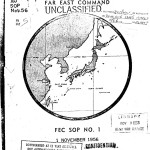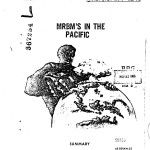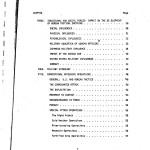
This 1956 report was “promulgated for the purpose of establishing normal procedures which will ensure the most efficient and expeditious employment of atomic weapons in accordance with JCS policy…Upon initiation of hostilities, on a scale warranting the use of atomic weapons, it is expected that Commander-in-Chief, Far East (CINCFE) will be authorized to employ atomic weapons, in the accomplishment of the theater mission…This standing operating Procedure (SOP) established the procedure to be used in the Far East Command (FEC) for the control and expenditure of atomic weapons. The procedures set forth herein shall be adhered to by all commands concerned with the planning for and execution of atomic strikes…”
This report was released to the Nautilus Institute under the US Freedom of Information Act (FOIA).



